How to Access the Group Policy Editor in Windows Home?
Last Updated :
28 Mar, 2024
Group Policy Management is a feature exclusive to Professional, Enterprise, and Education editions of Windows. However, Home users can enable the Local Group Policy Editor in Windows 10 and 11, or use a third-party tool for a more comprehensive set of settings. The Local Group Policy Editor console (gpedit. msc) is used to configure Windows settings, but not available by default on Windows Home editions.
In this article, We’ll show how to access the group policy editor in Windows Home.
What Is the Group Policy Editor?
The Group Policy Editor, an administrative tool in Windows, enables the configuration of various operating system aspects. It offers a user interface that manages policies influencing the system’s behavior and user experience.
Open the Local Group Policy Editor
Users can access the Local Group Policy Editor directly on Windows Professional or Enterprise editions. However, Home edition users must implement a workaround to access this feature, as it is not included by default.
Method 1: Using Search Bar
Step 1: Press Windows Key + S then on the search bar type “Edit group policy“
Step 2: On the right side click on “open“
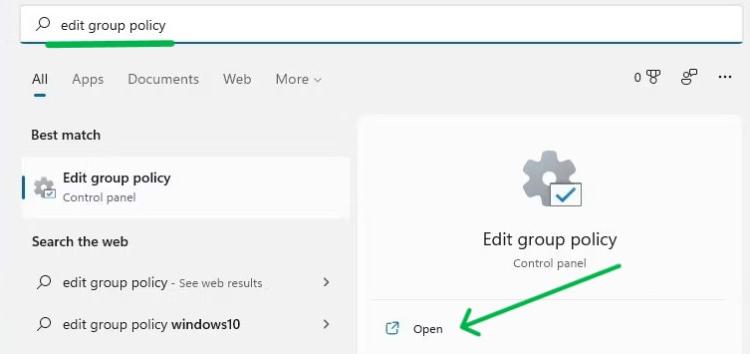
Method 2: Using Run Dialog
Step 1: Press Windows + R then on run dialog type “gpedit.msc“
Step 2: Press the Enter button or OK to open the group policy on Windows home
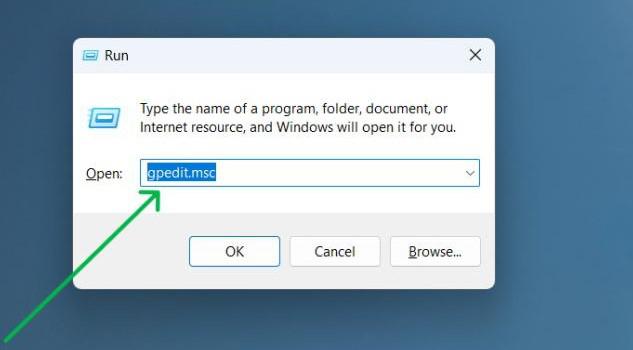
Configuring Windows Settings Without Group Policy Editor
Users of Windows Home editions must use alternative methods to configure system settings typically managed by the Group Policy Editor. These methods can include direct registry edits or the use of third-party software solutions.
Policy Plus, a free and open-source tool, extends the capabilities of Group Policy settings to all Windows editions, beyond just Professional and Enterprise. It empowers users to view and edit Registry-based policies across local GPOs, per-user GPOs, individual POL files, offline Registry user hives, and the live Registry.
You can download Policy Plus from GitHub:
https://github.com/Fleex255/PolicyPlus
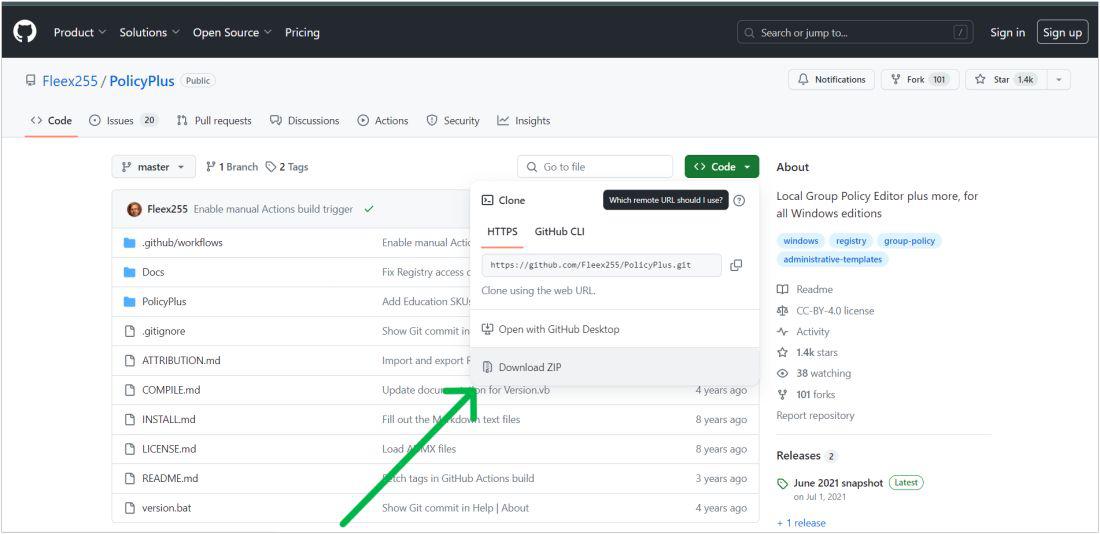
Enable Group Policy Editor (gpedit. msc) on Win 10/11 Home Edition
To enable the Group Policy Editor on Windows Home editions, you can use any method like GPEdit Installer or PowerShell Script to enable the Group Policy Editor on Windows Home edition.
Method 1: Using PowerShell Script
For the more technically inclined, enabling the Group Policy Editor via a PowerShell script is an efficient way to activate this feature. This method involves executing a script that automates the installation process, providing a swift and direct approach to accessing the Group Policy Editor on Windows Home Editions.
Step 1: Open Notepad
Step 2: Copy this code and paste it into Notepad and save as it a .bat file
@echo off
pushd “%~dp0”
dir /b %SystemRoot%\servicing\Packages\Microsoft-Windows-GroupPolicy-ClientExtensions-Package~3*.mum >List.txt
dir /b %SystemRoot%\servicing\Packages\Microsoft-Windows-GroupPolicy-ClientTools-Package~3*.mum >>List.txt
for /f %%i in (‘findstr /i . List.txt 2^>nul’) do dism /online /norestart /add-package:”%SystemRoot%\servicing\Packages\%%i”
pause
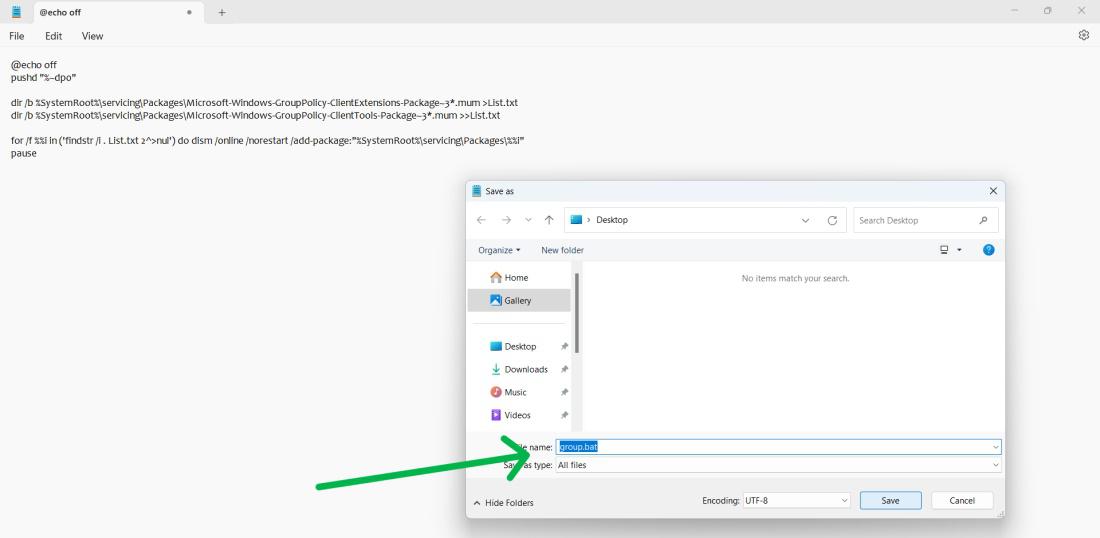
Step 3: After that click on the saved file and select “Run as administrator” from the menu
Step 4: After completion, press any key to close the Command Prompt
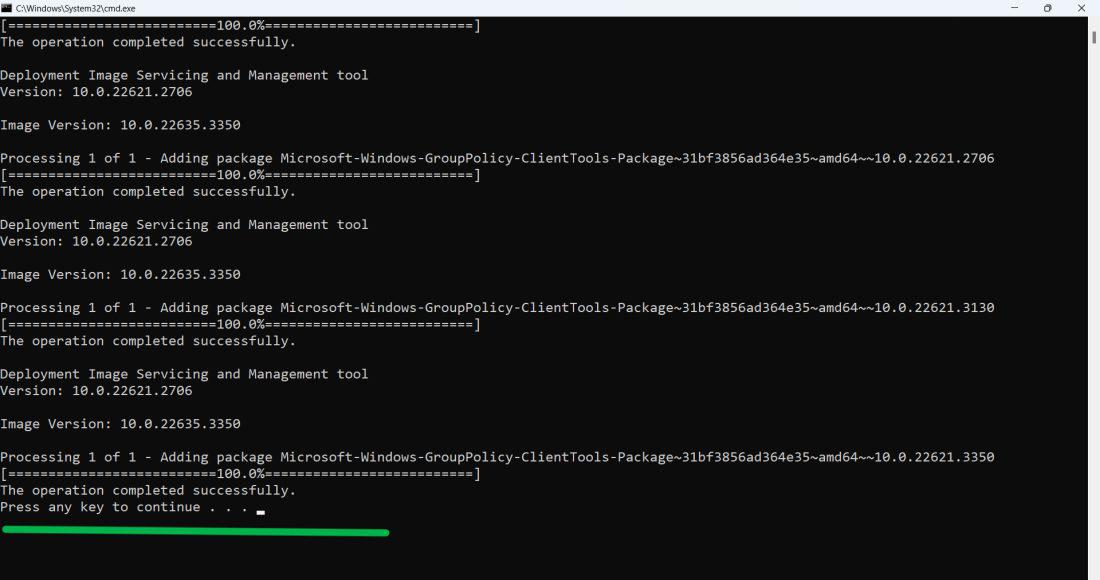
Step 5: Restart Your computer
Method 2: Using GPEdit Installer
Unlocking the Group Policy Editor in Windows Home Edition is made simple with the GPEdit Installer. This method provides a hassle-free installation process, allowing users to quickly gain access to the editor’s extensive settings and configurations without complex procedures.
Step 1: Download the setup file from this link
https://bit.ly/3INu7Xg
Step 2: Double-click on the setup.exe file then click on “next“
Step 3: Select Install
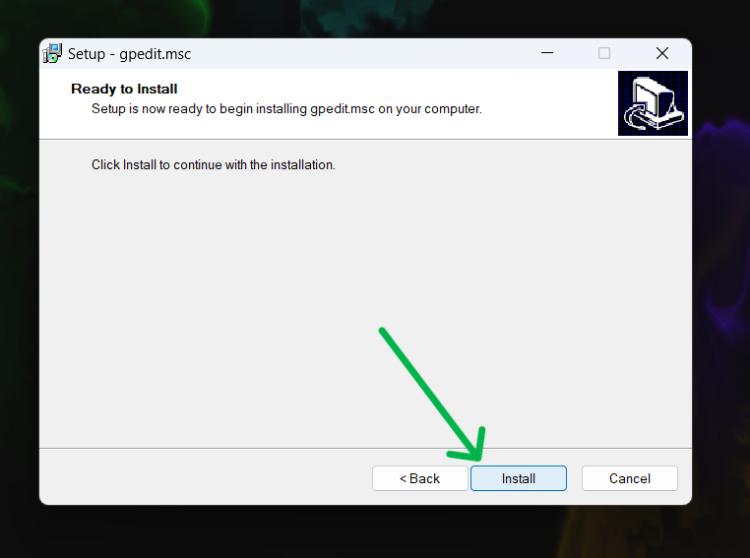
Step 4: After clicking on the install button a window will be pop
Step 5: Restart your computer
Also Read
Conclusion
In Conclusion, The Group Policy Editor empowers you to manage your computer’s settings robustly. Although not included by default in Windows Home editions, you can still harness its functionality. By utilizing either the Group Policy Editor or a third-party tool such as Policy Plus, managing your computer’s settings becomes straightforward and accessible.
FAQs on How to Access the Group Policy Editor in Windows Home
How to Access the Group Policy Editor in Windows Home
You can enable the Group Policy Editor in Windows Home by using the Command Prompt with administrative privileges. Execute the following commands in sequence:
@echo off
pushd “%~dp0”
dir /b %SystemRoot%\servicing\Packages\Microsoft-Windows-GroupPolicy-ClientExtensions-Package~3*.mum >List.txt
dir /b %SystemRoot%\servicing\Packages\Microsoft-Windows-GroupPolicy-ClientTools-Package~3*.mum >>List.txt
for /f %%i in (‘findstr /i . List.txt 2^>nul’) do dism /online /norestart /add-package:”%SystemRoot%\servicing\Packages\%%i”
pause
How do I open Group Policy Editor in Windows 10 Home?
After enabling the Group Policy Editor as described, press Win + R to open the Run dialog, type gpedit.msc, and press Enter to open it.
How to edit local group policy with cmd?
You can edit local group policy objects via the command line by directly modifying the Windows Registry, where policy settings are stored. Apply new policies using a .reg file and implement them with the command regedit.exe /s “full path to your .reg file”. Alternatively, use PowerShell scripts to convert Registry files to XML for importing into Group Policy Preferences.
Share your thoughts in the comments
Please Login to comment...